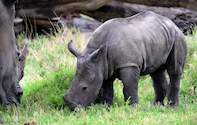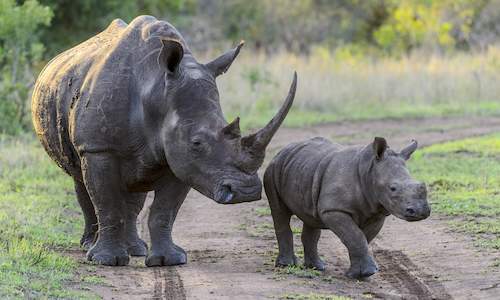
Sustainable Biodiversity
The increase in worldwide human population and urban development has led to a loss of habitat in the world of nature. Wildlife occurs naturally in very few parts of the world, with the majority of free-roaming wildlife occupying spaces on African terrain.Due to the increase human activity on open plains, biodiversity is being lost to varying extents. Recent studies, however, have shown how both the white rhino and termites contribute to biodiversity in Africa. Humans easily feel the need to get involved in the conservation of wildlife, often blinded to the fact that nature operates according to its own cycle.
The 12th Annual Savanna Science Network Meeting was held in Skukuza in March 2014. The event was hosted by SANParks' Scientific Services and included international input in a range of topics relating to wildlife and conservation. Scientists and researchers gathered to discuss existing ideas and share potential research topics.
Some findings showed that termite mounds create heterogeneity and alter soil properties to include more moisture and nutrients. Furthermore, they create a diversity of grass which is grazed upon by a variety of herbivores, specifically mammalian herbivores. The conclusion that had been drawn after research and discussions on the topic showed that termite mounds are essential in creating savanna biodiversity and enables sustainable grazing. The White Rhino is also praised for its influence on the savanna plains of South Africa, specifically the Kruger National Park.
White Rhinos, Termites and Biodiversity
Day three, Wednesday 23 April 2008, of the 2008 Annual Savanna Science Network Meeting offered interesting perspectives on why white rhinos and termites are both key species to sustain and promote biodiversity. Because of the way they graze, white rhinos benefit a wide variety of insects, spiders, birds and even other mammals. "White rhinos are basically huge lawnmowers that create open lawns, but leave some areas of tall grass undisturbed," Dr Richard Fynn of the University of KwaZulu-Natal, who is doing research in the Kruger National Park, explained. "This patchiness is essential for biodiversity."Some species are short grass specialists, while others prefer long grass. Some need a place to hide, while others prefer open spaces where they can see predators. "It would make sense to introduce more white rhinos to the central basalt plains of the Kruger National Park where expanses of tall grasses are currently limiting biodiversity and where blue wildebeest numbers have declined," Dr Fynn believes.
"White rhinos will allow blue wildebeest numbers to increase, because they prefer to graze on short grass and also use open areas as a way to detect predators."
Cleo Gosling, a PhD student from the University of Groningen in the Netherlands currently working in the Hluhluwe iMfolozi Park in KwaZulu-Natal, found similar results for white rhinos there. Another reason why rhinos benefit biodiversity is that their middens add fertiliser to the environment, and also attract a wide variety of birds and insects. Birds and insects come to pick through the dung for seeds, while dung beetles help to spread the fertilising effect.
She has found that termites also encourage biodiversity in similar ways to white rhinos. Termites also keep grasses short, especially in the areas around their mounds. They are especially important because the remove a lot of dead plant material, thereby creating space for re-growth of new plants that will attract more grazers. "Without termites, we would be neck-deep in dead plant matter," she says. "Termites don't generally compete with grazers, whether it is cattle or wildlife, but rather facilitate the constant rejuvenation of the ecosystem, thereby helping grazers."
Farmers sometimes destroy termite mounds or poison termites because they think termites are competing with their livestock, whereas termites will mostly benefit the grazing available for cattle, she explained. When mature, winged termites, known as alates, fly out of the mounds, they provide a feast for a wide range of birds, insects, reptiles and even small carnivores, such as jackals. Termites are also an important source of food for aardvark. Aardvark holes, in turn, create important niches for a wide range of other animals."
References
South African National Parkshttps://www.sanparks.org/about/news/default.php?id=924
https://www.sanparks.co.za/assets/docs/parks_kruger/conservation/scientific/noticeboard/science_network_meeting_2014/Thursday/davies-a.pdf

 The White Rhino is the third largest land mammal. Massive, stocky, and with a reputation of being not quite as aggressive as the black rhino...
The White Rhino is the third largest land mammal. Massive, stocky, and with a reputation of being not quite as aggressive as the black rhino...